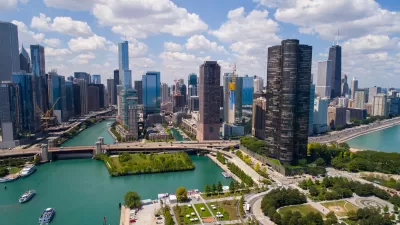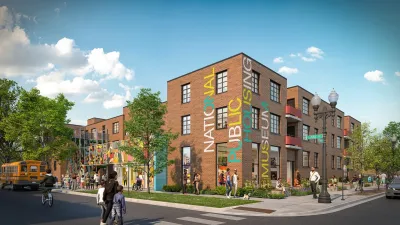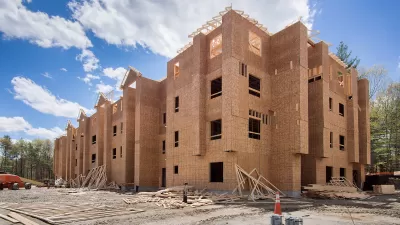Higher taxes on high-value property sales are being considered in Chicago, Connecticut, and Washington state as a way to address the housing crisis.

One-time fees on the sale or purchase of property, often called real estate transfer or real estate excise taxes, are nothing new. As Kevin Hardy explains for Stateline, such fees have been a fixture of many tax codes for decades. “But local and state governments are increasingly looking to create a ‘mansion tax’ targeting the higher ends of the real estate market” with the aim of tackling the growing housing crisis, he writes.
To date, 16 cities and counties and seven states have approved that type of tax, many with the intent of putting the revenue to building affordable housing. Though not without pushback. The approach has led to litigation in Santa Fe and Los Angeles. But that’s not stopping other cities and states from considering it, including Chicago, Massachusetts, and Washington state, according to the Stateline article.
In March, “Chicago voters will decide whether to approve Democratic Mayor Brandon Johnson’s Bring Chicago Home referendum, which would increase the real estate transfer tax on expensive properties. And legislators in Massachusetts are weighing a bill that would allow cities to impose their own real estate transfer fee,” Hardy reports. Washington state lawmakers are also considering a bill that would increase the tax on property sales above $3 million, while decreasing it for less expensive sales.
FULL STORY: If you can buy a ‘mansion,’ you can pay a tax for affordable housing, these states say

Planetizen Federal Action Tracker
A weekly monitor of how Trump’s orders and actions are impacting planners and planning in America.

Congressman Proposes Bill to Rename DC Metro “Trump Train”
The Make Autorail Great Again Act would withhold federal funding to the system until the Washington Metropolitan Area Transit Authority (WMATA), rebrands as the Washington Metropolitan Authority for Greater Access (WMAGA).

The Simple Legislative Tool Transforming Vacant Downtowns
In California, Michigan and Georgia, an easy win is bringing dollars — and delight — back to city centers.

The States Losing Rural Delivery Rooms at an Alarming Pace
In some states, as few as 9% of rural hospitals still deliver babies. As a result, rising pre-term births, no adequate pre-term care and "harrowing" close calls are a growing reality.

The Small South Asian Republic Going all in on EVs
Thanks to one simple policy change less than five years ago, 65% of new cars in this Himalayan country are now electric.

DC Backpedals on Bike Lane Protection, Swaps Barriers for Paint
Citing aesthetic concerns, the city is removing the concrete barriers and flexposts that once separated Arizona Avenue cyclists from motor vehicles.
Urban Design for Planners 1: Software Tools
This six-course series explores essential urban design concepts using open source software and equips planners with the tools they need to participate fully in the urban design process.
Planning for Universal Design
Learn the tools for implementing Universal Design in planning regulations.
Smith Gee Studio
City of Charlotte
City of Camden Redevelopment Agency
City of Astoria
Transportation Research & Education Center (TREC) at Portland State University
US High Speed Rail Association
City of Camden Redevelopment Agency
Municipality of Princeton (NJ)





























